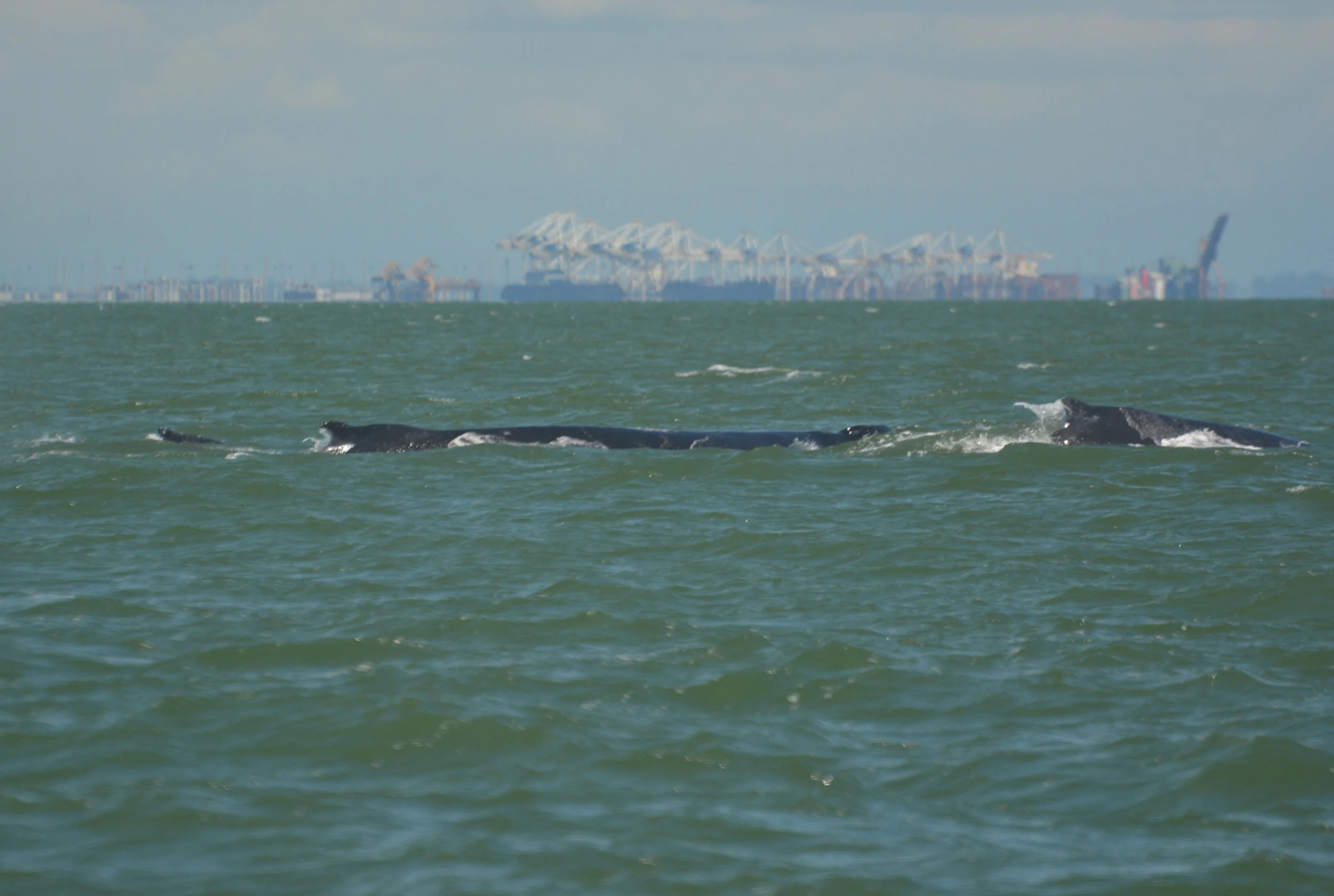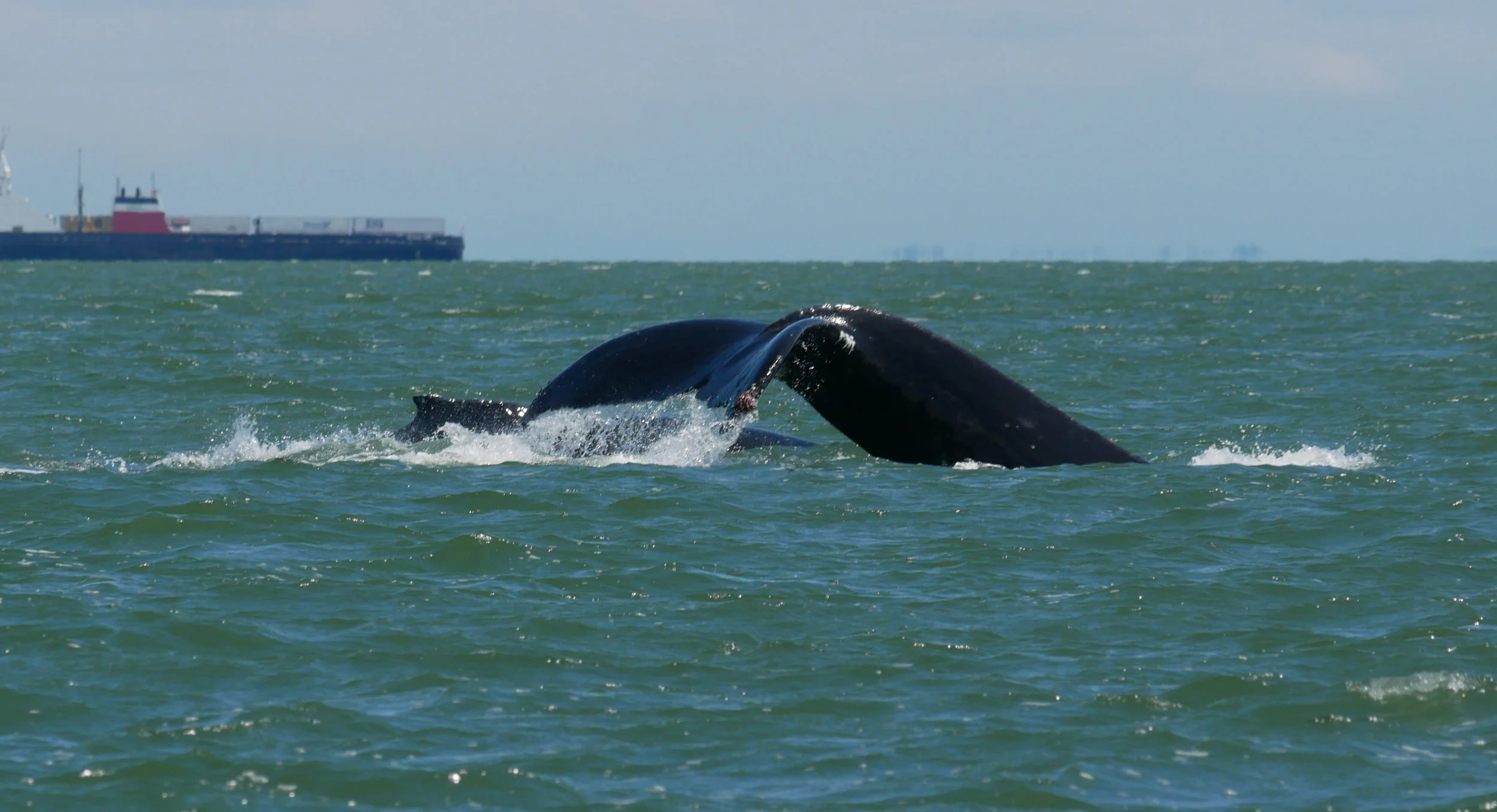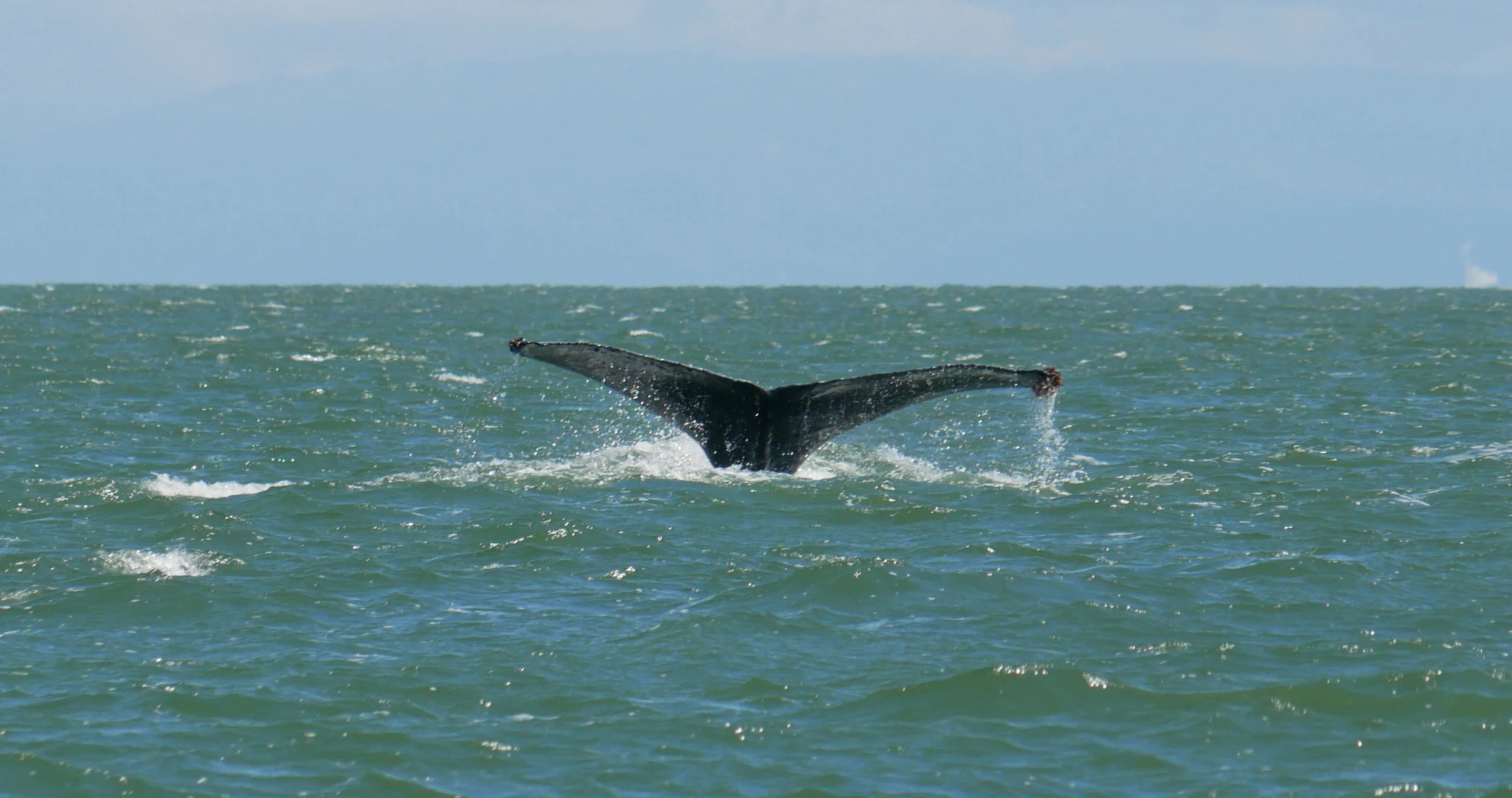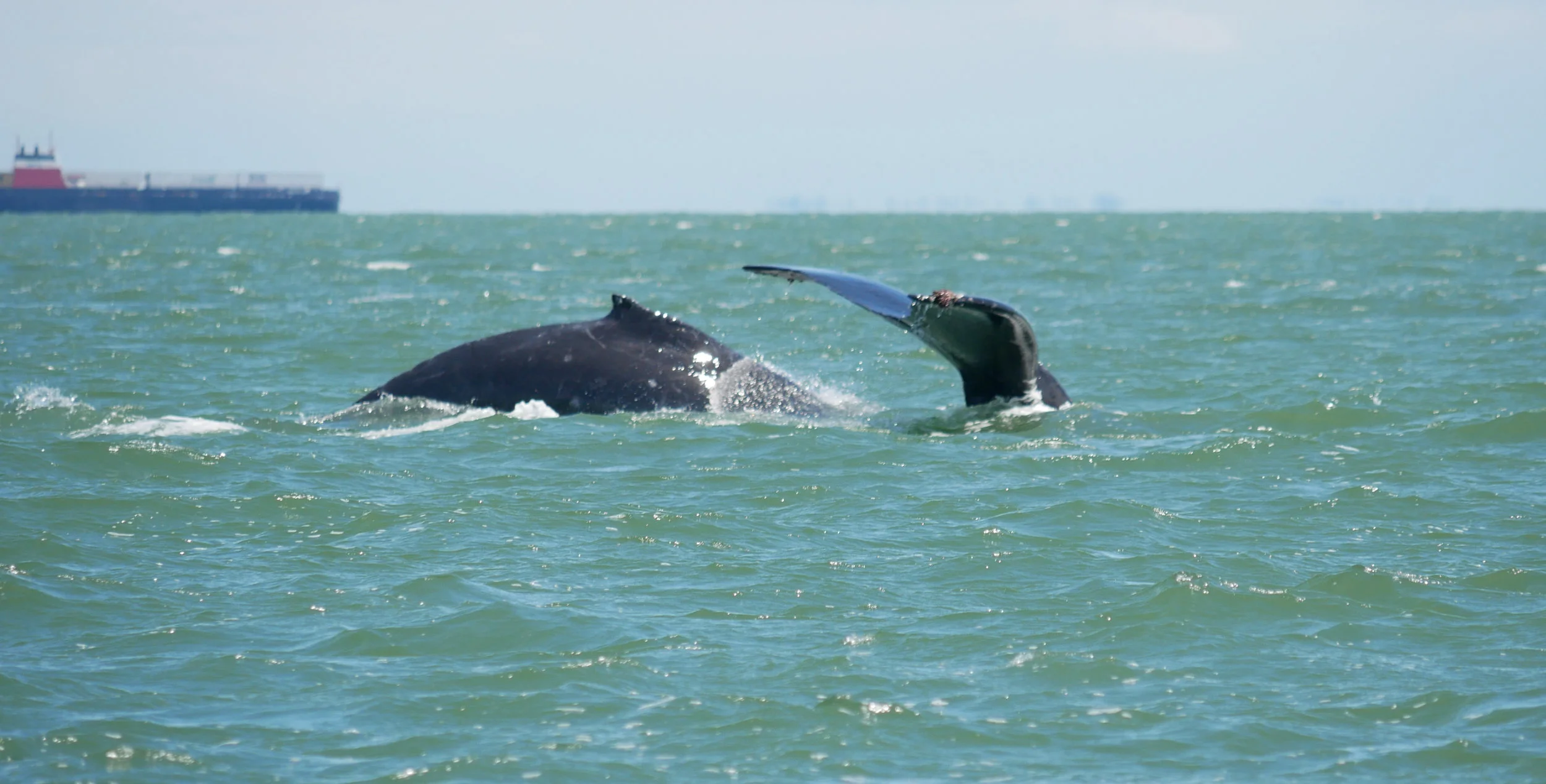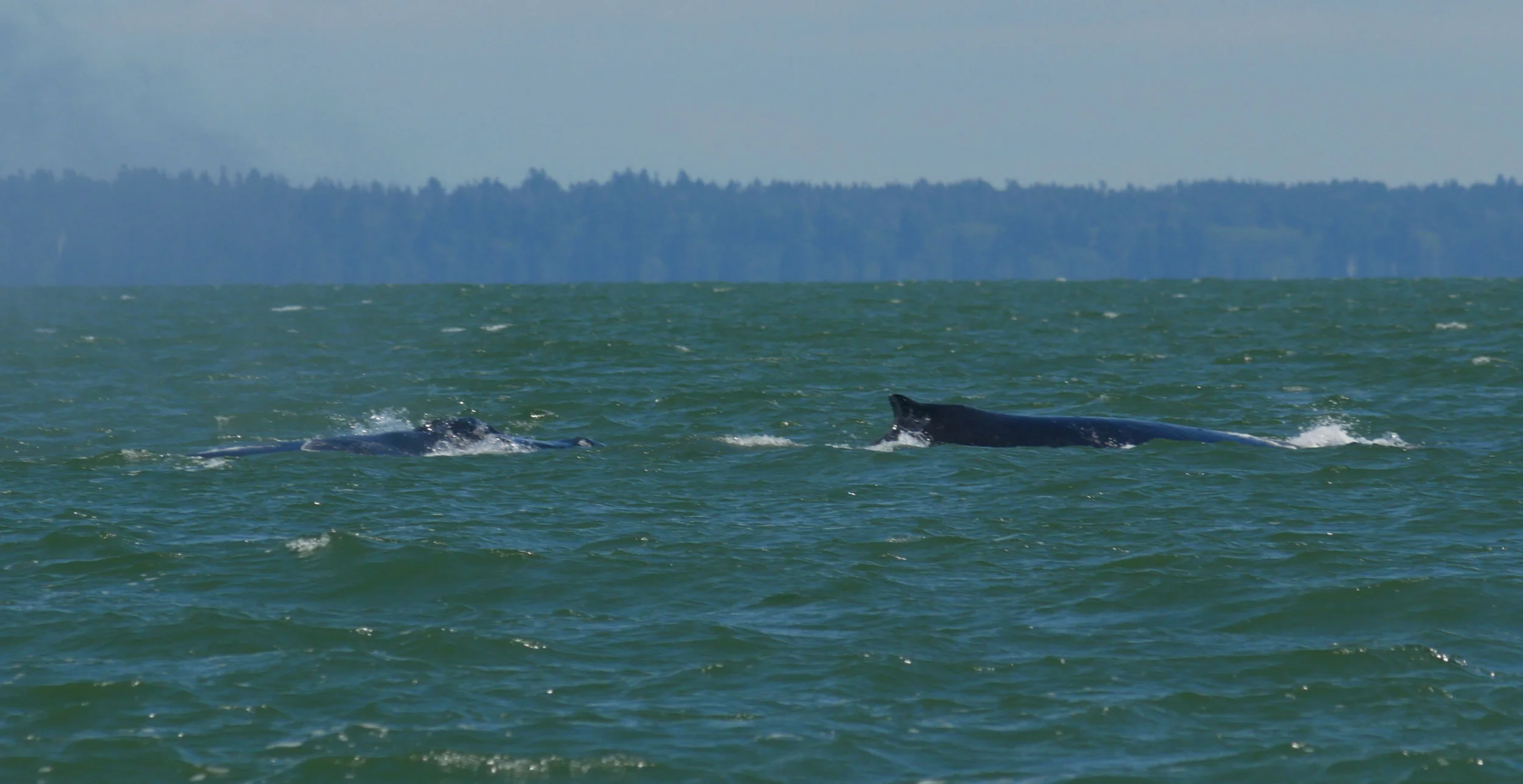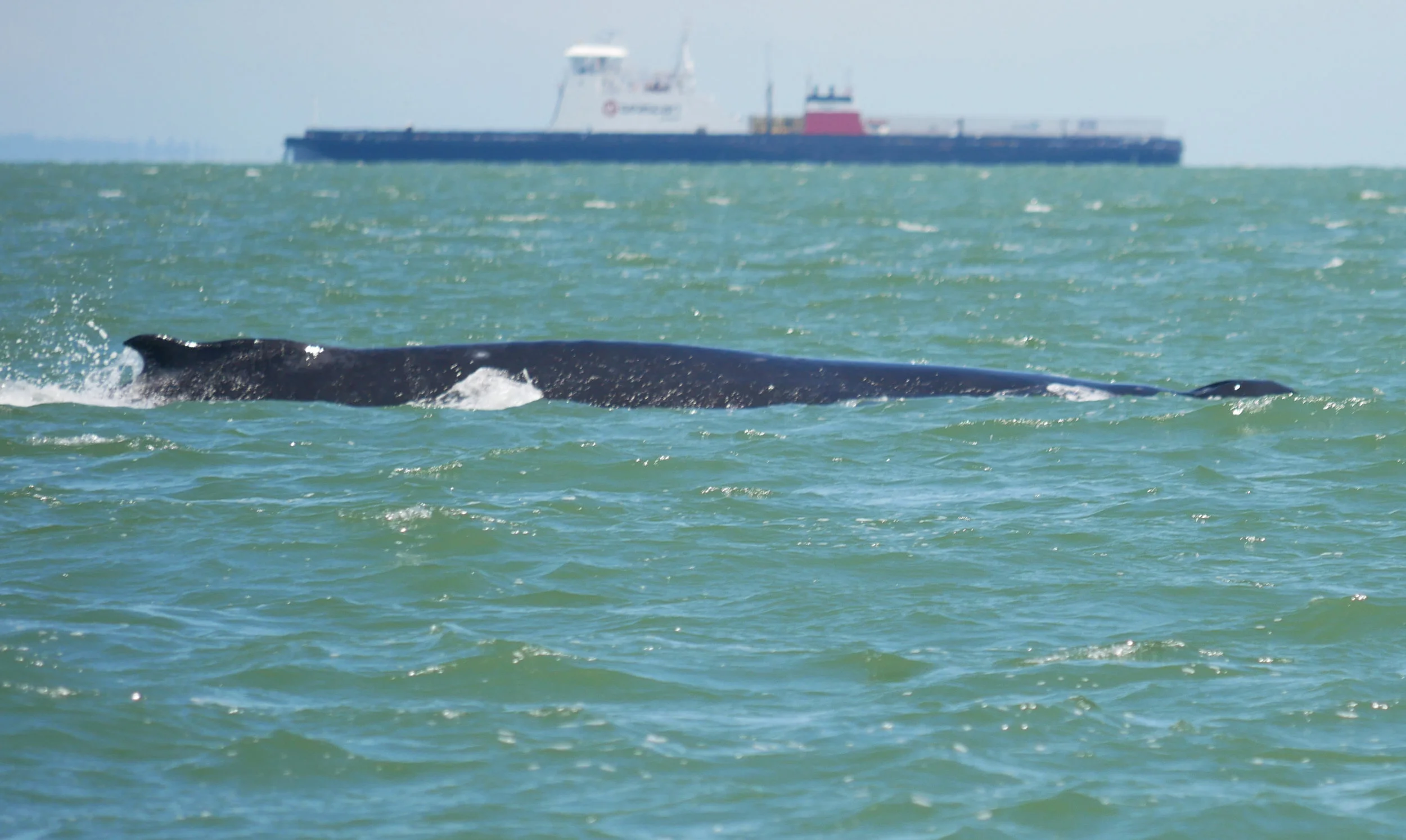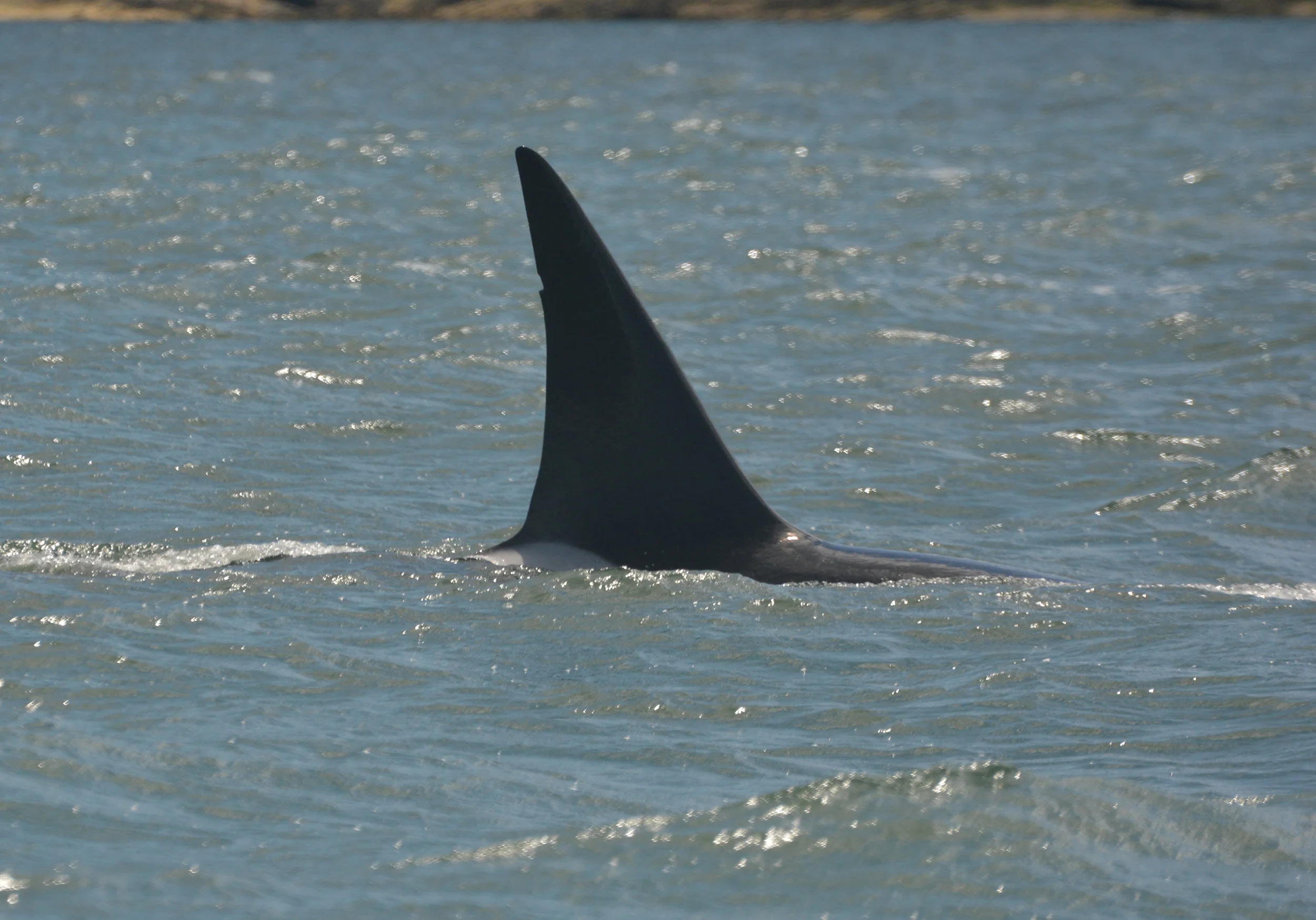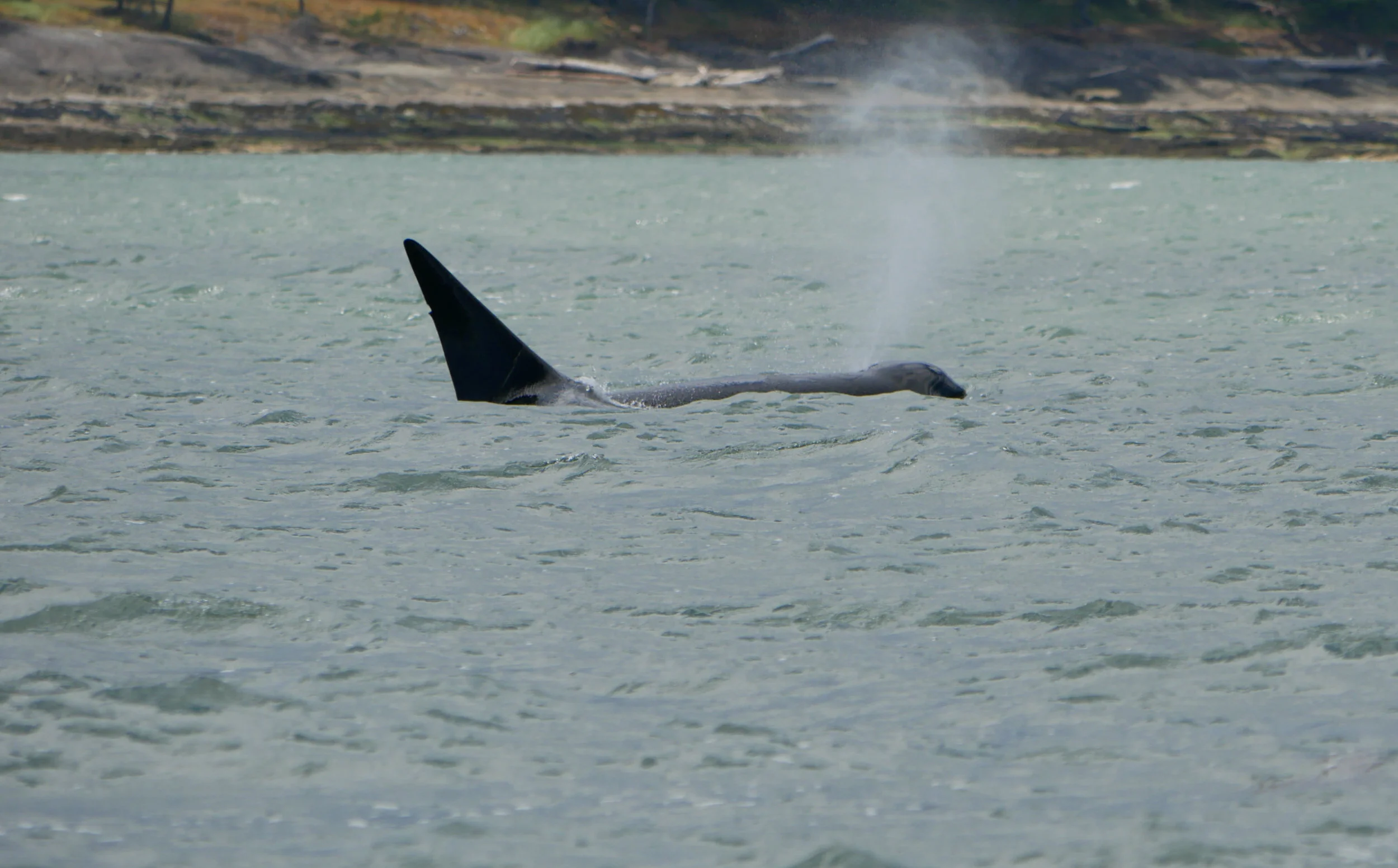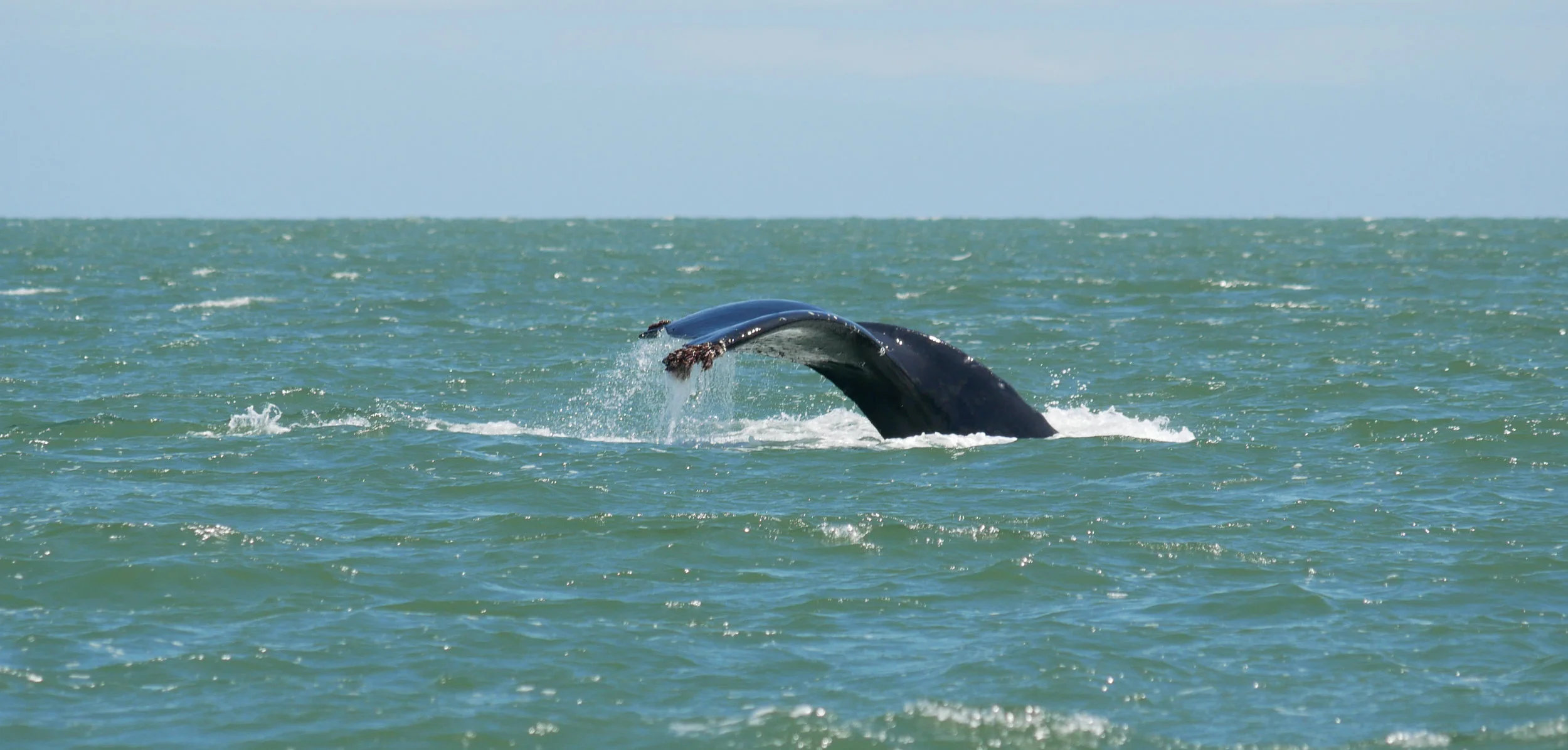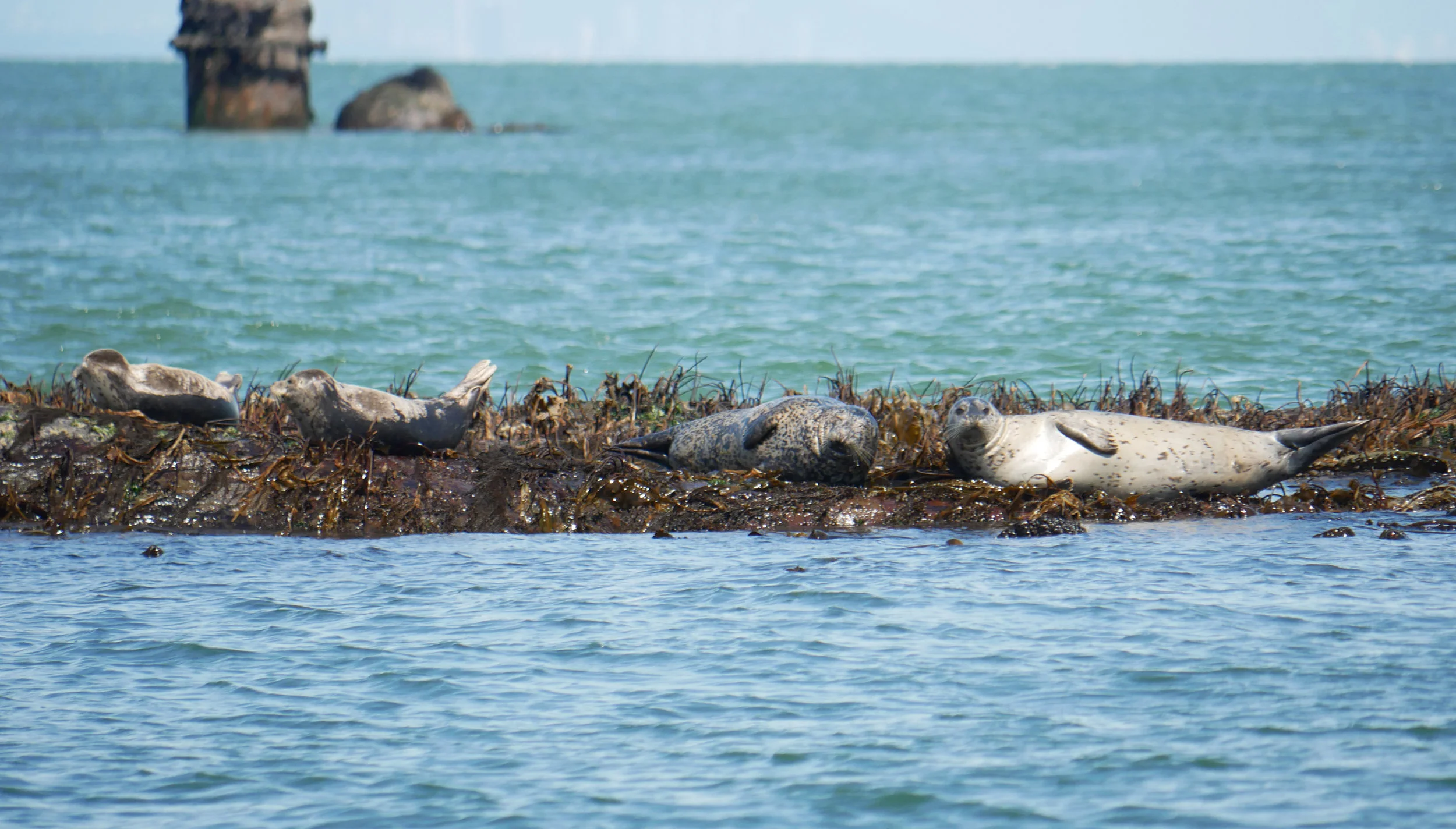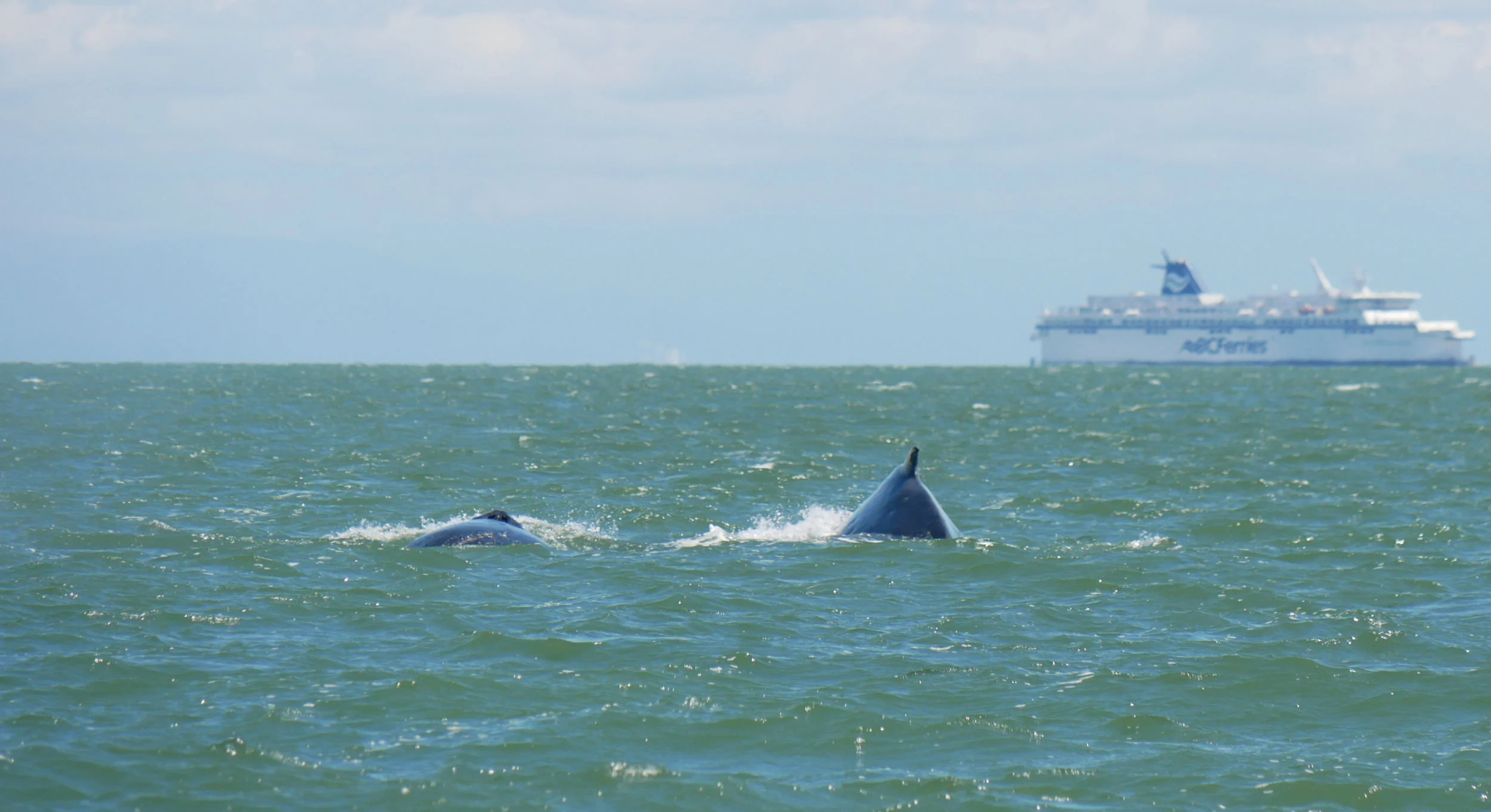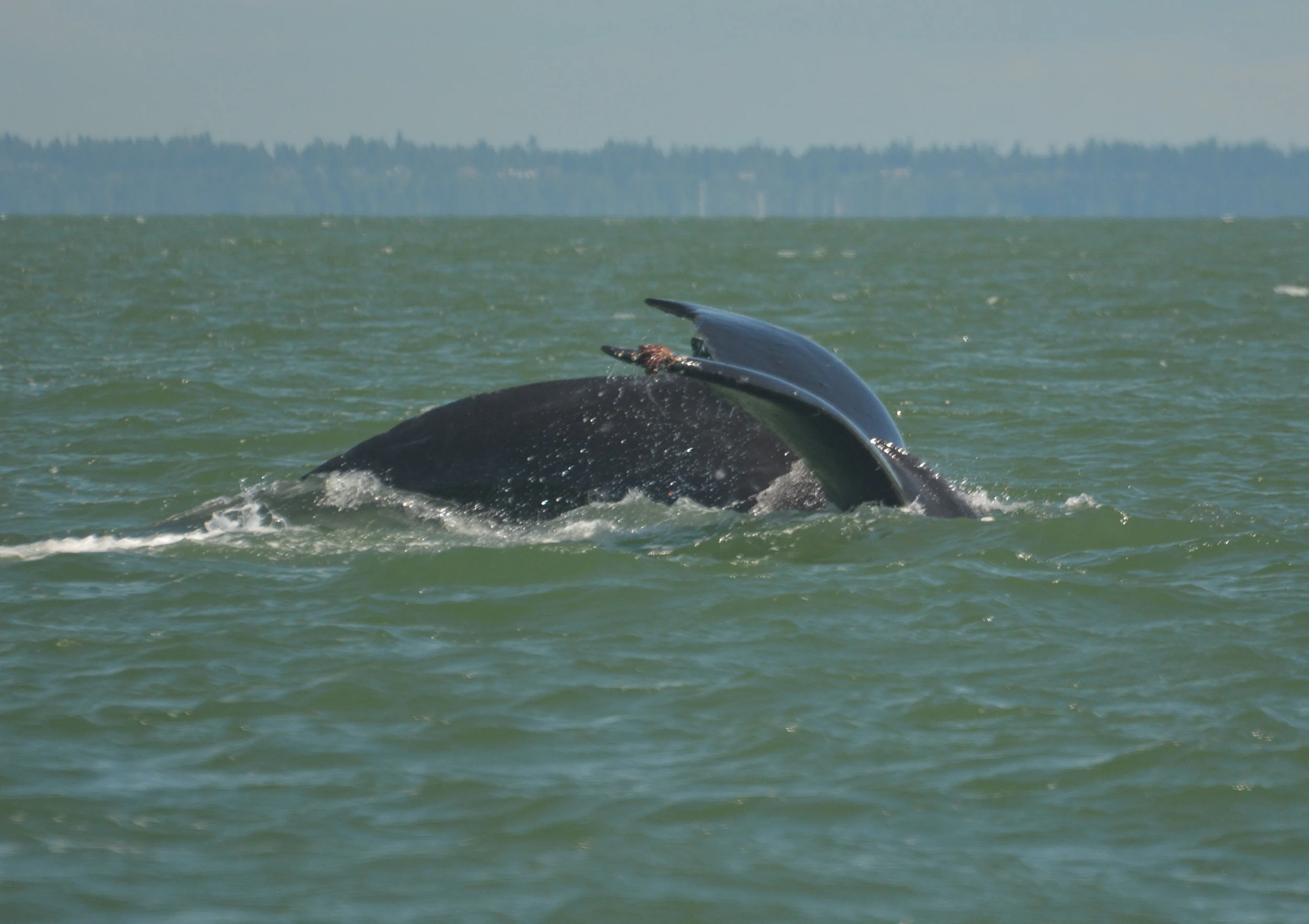June 8th - The best of both worlds!
When we left the dock and headed out looking for the whales the morning on the 8th we had no idea what was in store for us. We went out looking for whales in the area and shortly got a report of three humpback whales feeding together along the shore of Galiano Island. We made our way there and were surprised to hear that not 5 miles away another boat spotted the distinct black dorsal fin of an orca!
Photo by Val Watson.
Photo by Rodrigo Menezes.
The humpback whales we got to see were identified as Slate, her calf, and Corona! IDs are determined by looking at the underside of the fluke of the humpback whale and matching it up to photo identification guides provided to us by organizations such as Keta Coastal Conservation. The underside of the fluke is unique to every individuals, much like our fingerprints, but much easier to get a photo of.
Photo by Rodrigo Menezes.
Photo by Rodrigo Menezes.
Getting to see a mother humpback and her calf is a very extraordinary experience, and really puts the size of these animals in perspective. Although dwarfed by their mother a newborn humpback calf is 6m long. and can weigh 2 tonnes! This calf has made the journey from their breeding/ birthing ground down south (Hawaii or Mexico) all the way back up to BC to feed in our nutrient rich waters. The female will nurse the calf for about 6 months before the calf will need to start filter feeding on its own to supplement its mothers milk. After approximately 1 year it will no longer need its mothers milk.
Photo by Rodrigo Menezes.
FUN FACT: the milk produced by a humpback whale is pink in colour! Weird right?
Photo by Rodrigo Menezes.
After watching these humpbacks we travelled a very short distance to the lone male orca found in the area. This whales name is Cooper (T124C), but we think he should be called “Lazy Cooper” due to his seemingly sluggish movements. He is a mature male orca who is part of the T124 matriline but now travels away from the rest of his family. Lone animals occur in the transient orca population and is not gender dependant. We have lone males and females. They will sometimes join with other lone whales and travel and hunt together, or even meet wth other pods for a short while. This male was found earlier in the season travelling with another lone male, T87.
Photo by Val Watson.
Photo by Rodrigo Menezes.
Photo by Val Watson.
Enjoy some pictures taken by our marine naturalists from that day!
Photo by Rodrigo Menezes.
Photo by Val Watson.
Photo by Rodrigo Menezes.
Photo by Rodrigo Menezes.
Photo by Val Watson.
Photo by Rodrigo Menezes.
Photo by Val Watson.
Photo by Rodrigo Menezes.

